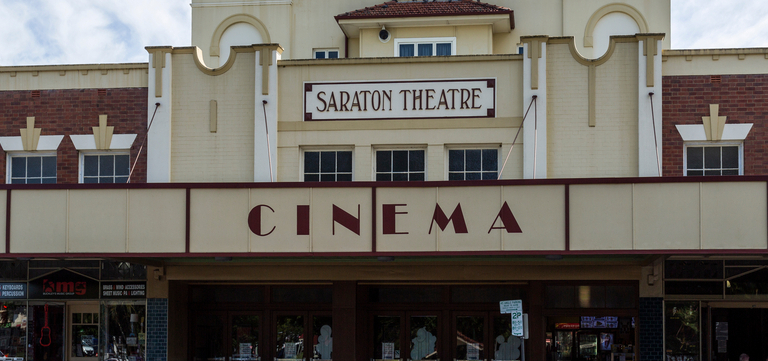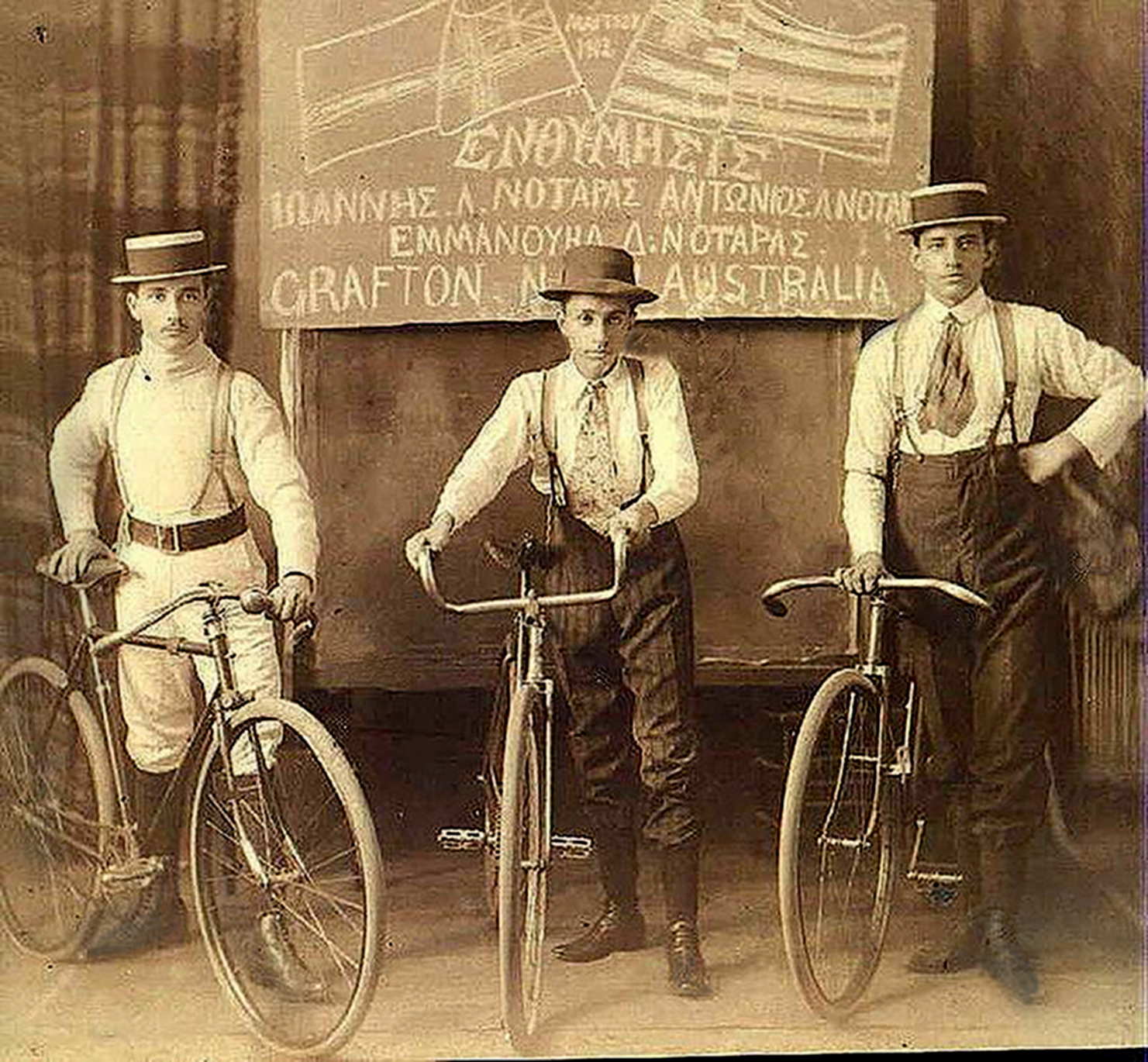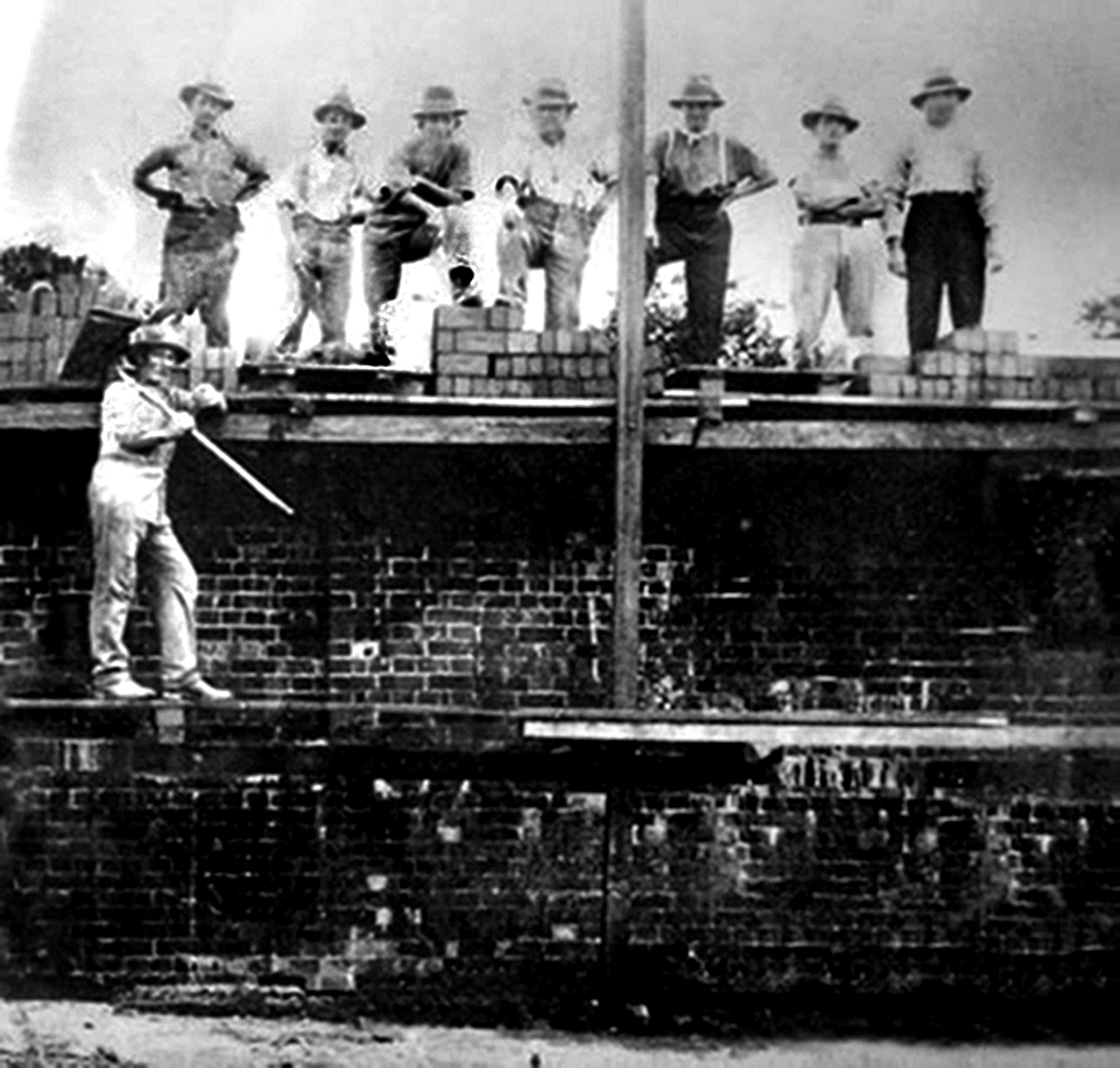Location
Saraton Theatre, 99 Prince Street, Grafton NSW 2460
The Clarence Valley is on the land of the Bundjalung, Gumbaynggirr and Yaegl nations.
Accessibility
Wheelchair accessible
About Ioannis (Jack) and Antonios (Tony) Notaras
Ioannis (Jack) (1892–1962) and Antonios (Tony) Notaras (1895–1991) were Greek migrants who became highly successful restaurateurs and theatre owners in the Clarence River region. The brothers owned a series of successful cafes and built Grafton's best-known theatre and cinema, the Saraton.
Establishing a life in Grafton
In 1902, Jack and Tony's father, Lambrinos Notaras, moved to Sydney from the Greek island of Kythera, leaving behind his wife and children. He brought his eldest son, Jack, over in 1905. Tony followed in 1908, and Lambrinos and his sons moved to Grafton. There, in 1909, Lambrinos leased a shop and premises in Prince Street. Assisted by his sons, he turned this shop into a thriving cafe and was able to lease another cafe in Skinner Street, South Grafton, in 1911.
In 1913, Lambrinos returned to Kythera, leaving his sons in charge of the cafes. The outbreak of the First World War meant he never returned to Australia.
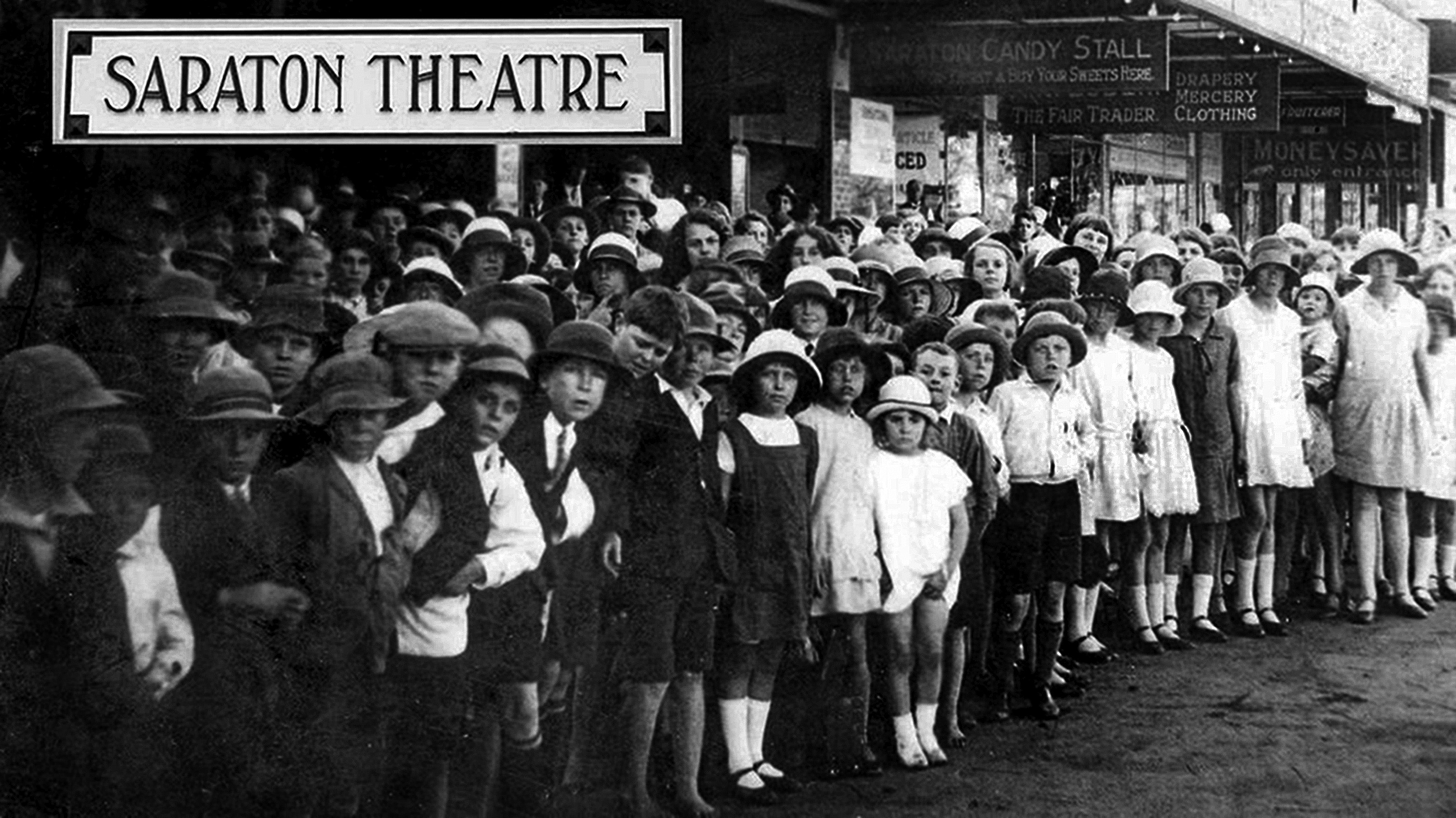
Children outside Saraton Theatre for opening, 1926
The birth of an icon – the Saraton Theatre
In the early 1900s, cinemas were the most popular entertainment in Australia. Sensing an opportunity, the Notaras brothers took over the Fitzroy Theatre before announcing they were building a new theatre in Prince Street, Grafton. The brothers invested £23,000 (the equivalent of over $2 million in today’s currency) to build the new complex.
Following a naming competition, the Saraton Theatre (Notaras spelt backwards) opened in July 1926. The cinema had seating for 1,400 people and an elaborate dress circle. On its opening night, the Notaras brothers' own 12-minute silent movie Grafton at work and play was screened.
The Saraton Theatre quickly became a community hub in Grafton, with the brothers generously making the theatre available for community events. Tony worked for 35 years with the Grafton Rotary Club, and the pair frequently donated movie tickets for fundraising drives.
Fire and rebirth at the Saraton
In 1932, the Saraton was devastated by a large fire, which caused major damage to the screen, stage and curtains, roof rafters, baffle boards and flooring. The cinema remained closed for the next 8 years, only occasionally opening for dances, concerts and other community events.
In 1940, the Saraton underwent a £4,000 renovation designed by Brisbane architect George Rae in the Art Deco style. Prime Minister Sir Earle Page reopened the Saraton on 9 July 1940, commending the brothers for providing valuable entertainment opportunities during periods of war.
A proud legacy
Jack and Tony both married and raised families in Grafton, while maintaining strong connections with Greece and their heritage. Tony frequently spoke at community meetings about the relationship between Greece and Britain and contributed to Red Cross parcels sent overseas to assist Australian and Greek soldiers.
After the deaths of Jack and Tony, the Saraton passed to the next generation. Unfortunately, a 1944 fire and the 1950 Grafton flood caused extensive damage and the theatre was closed until the 1970s. Angelo, John and Mitchell (sons of Tony) and their cousin Spiro (son of Jack) Notaras bought out other family members. The cinema was closed for restoration in 2008, with an additional 2 cinemas and the latest digital projection and sound equipment.
The theatre reopened in 2010. On its (re)opening night, the founders' film Grafton at work and play was again screened as a tribute to the brothers and the cinema they had established 84 years prior.
Continuing his father's strong community service, Angelo Notaras received an OAM in 2014 for his service to the Greek community and was honoured for his work with the Greek Orthodox Church.
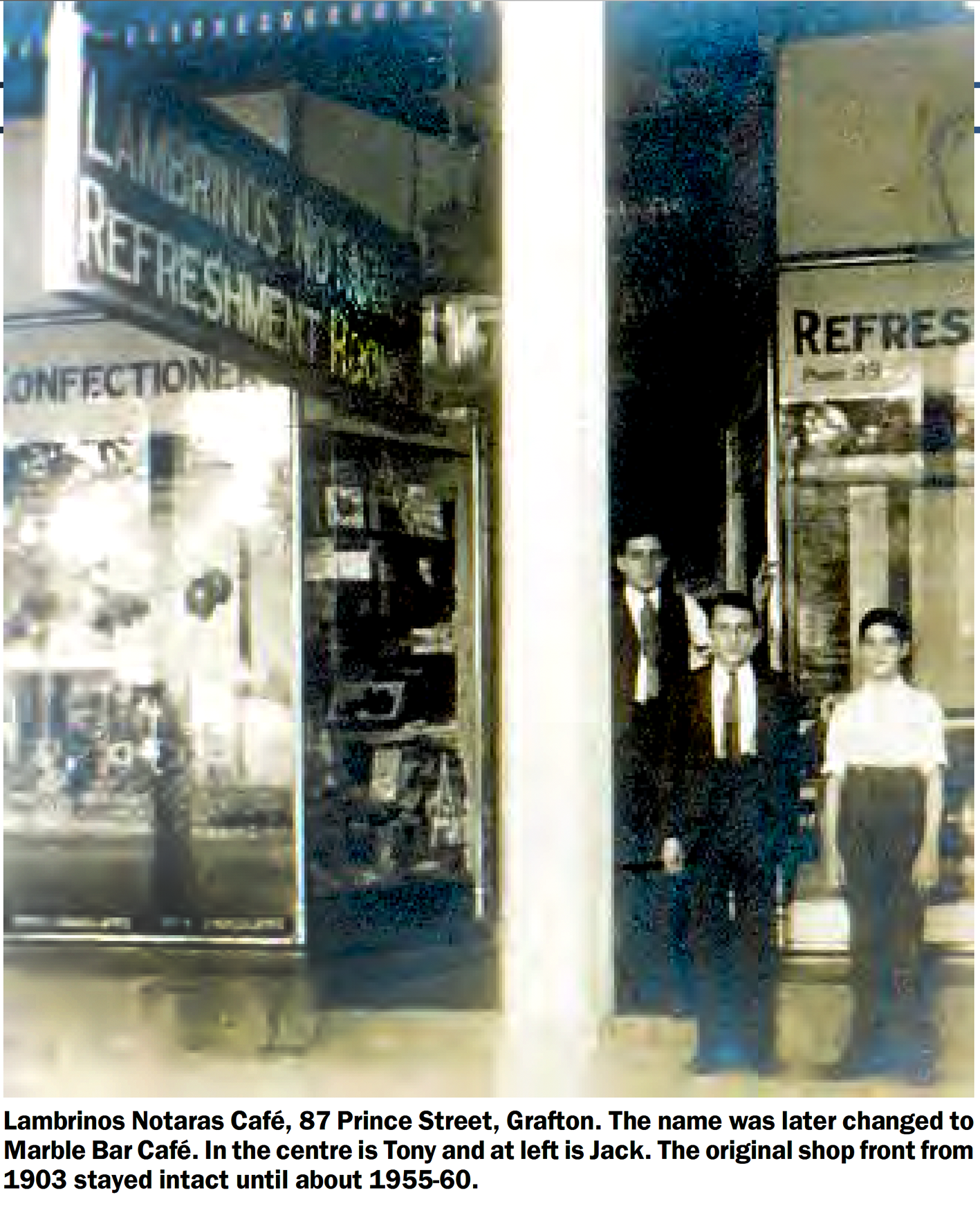
Lambrinos Notaras Cafe, 87 Prince Street, Grafton
References and further reading
- Gilchrist H (1992) Australians and Greeks. Volume 1: the early years, Halstead Press, Rushcutters Bay.
- Mackey N (28 June 2018) 'Grafton – The Saraton Theatre', Nola Mackey – Local History blog, accessed 24 June 2025.
- Notaras W (1 April 2005) Angelo and John Notaras, Kytherian Family Trust website, accessed 24 June 2025.
- Tsicalas P (31 July 2003) Notaras of Grafton, Kytherian Family Trust website, accessed 24 June 2025.
